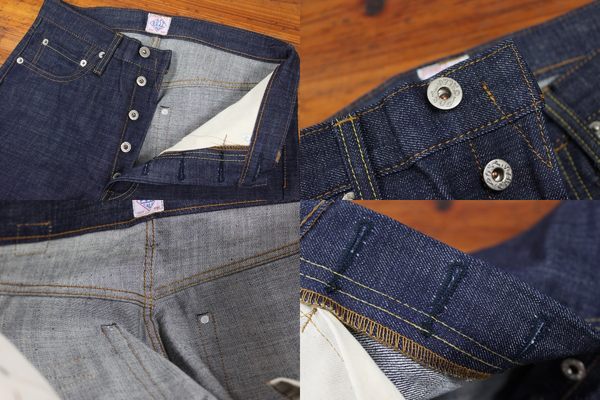
Work wear
工装
Takashi Tateno keeps an office in a simple studio above his wife’s hairdressing salon on the outskirts of Okayama, a medium-sized city in central Japan. In fashion circles, Okayama is famous for one thing: making the world’s best denim, using looms that date back to the 1950s. But Tateno isn’t a denim head. His brand, called Workers, adapts all sorts of American work wear from the 1900s to the ’60s—railroad jackets, canvas dusters, flannel shirts, double-kneed pants. Moreover, he’s obsessed by the American workers who manufactured these garments in their heyday, and the skills, techniques and tools used to produce such high-quality clothing on an industrial scale.
冈山是日本中部的一个中等城市。Tateno简陋的办公室坐落在在市郊,在他妻子经营的理发店上面。在时尚圈中,冈山以加工世界上最好的工装而著称,使用织布机的历史可以追溯到50年代。但Tateno的企业并非工装方面的领头羊。他创建了名为工人的工装品牌,产品由美国在1900年开始直至60年代的所有工装改进而来,包括:铁路工人的防护服、三防布、法兰绒衬衫、膝部加厚的工装裤。此外,他还一直着迷于在美国全盛时代生产这些工装的工人们,他们的技术、技能以及在如此高质量工装的工业化生产中所使用工具。
Before he hatched the idea of his own collection, Tateno spent years making clothes himself and working in a factory. At the same time, he launched a Japanese-language website that was absolutely alone in its single-minded pursuit of knowledge about the plans, patterns and procedures that old American work-wear manufacturers used to make their garments under such labels as Crown, W.M. Finck & Co. and Can’t Bust ’Em. Tateno journeyed to the United States multiple times to sift through archives and contact heirs to now-defunct clothing manufacturers to see if they had information about their ancestors’ businesses, and to buy up examples of the old clothes he loved so he could dissect their construction.
在总结出自己的理念之前,Tateno花费数年时间亲手制作服装并且在工厂参与工作。与此同时,他还创建了一个日语网站,完全一门心思的学习旧时美国工装制造商的设计、式样和加工工艺方面的知识。这些美国工厂创造了包括:皇冠、芬克以及康巴斯特在内的优秀品牌。Tateno来到美国花费大量时间查阅档案,联系已经落败了的旧时工厂的继承人,了解他们前辈在工厂经营方面的信息,并且还购买了他喜欢的那些老款服装样服,以剖析服装结构。
Tateno ushers me into his upstairs space. One room is filled with all kinds of clothing, everything from the work wear he collects to contemporary Italian jackets by Boglioli. There is also machinery, including an ancient riveting machine, plus old sewing-machine accessories that Tateno purchases so the factories he hires to produce his collection can make things to the exact specifications of, say, 1924 or 1942, with the same tools in use back then.
Tateno带我来到他楼上的房间。有一个屋子里堆满了各式各样的工装,从他收集的各式防护服到由贝格里尼设计的现代意大利夹克衫。还有他购买的老式缝纫机的零件,据他所说,1924年或42年购买了这些零件,目的是为了当时能够使用与美国同样的工具,生产规格完全一致的工装。
"When I learned to sew and tried to make these garments myself, I began to realize just how intricate the work was, what kind of tremendous skill level was required to turn out such huge quantities of high-quality garments," Tateno says. "These were produced at a time when American workers were the most knowledgeable and skilled in the world."
“当我学习到缝纫,并且尝试自己制作这些防护服时,才意识到这项工作是如此精细,需要极高的技能才能生产出大批如此高质量的工装。”Tateno说“生产这些服装的美国工人是当时全世界知识和技能水平最高的。”
Though the kind of skilled manufacturing he admired in these garments had largely disappeared in the United States—a consequence of apparel production moving abroad and garment workers no longer finding work—he saw older Japanese people around him in Okayama with high-level sewing skills. And so he realized that if he could unearth the manufacturing secrets behind these old garments, he could make them in Okayama—and perhaps make them even better than the originals.
由于美国将服装这类产品的生产转移海外,服装厂的工人们纷纷失业,尽管他所羡慕的这些技术熟练的美国服装企业中大部分已经倒闭,但他在冈山看到自己周边还有很多年长的日本人仍具备高超的缝纫技艺。因此他感到如果他能够揭开在这些老式防护服背后的技术机密。他便能够在冈山制造这些防护服,甚至或许比原来的更好。
The cult of the artisan is ensconced in contemporary urban American culture. This is the ideal of a person who can handcraft a pair of jeans or a necktie, conscious of the most minute details of fabric, workmanship and authenticity. The era Tateno’s clothing harks back to is not the age of the lone artisan laboring over a single creation, though; it’s the era of packed factories in Pennsylvania, Virginia and California churning out thousands and thousands of high-quality garments at a reasonable price, all because of the workers’ skill. The irony is that this ideal of the American worker, which sounds like something lifted from old-school union advertising copy, can be hard to find in America today.
对熟练技工的狂热已经躺倒美国现代城市文化的历史中。工人专注于纺织材料、加工技艺以及关乎可靠性的每个细节,手工打造一条牛仔裤或领结的情景已只存在理想之中。 然而Tateno的服装所处的已不是单个工匠独自创造的年代,而是宾夕法尼亚、弗吉尼亚和加利福尼亚的工厂中以低廉的价格成批出产千千万万套高质量服装的时候。所有的一切都因为工人的技艺问题。具有讽刺意味的是美国工人的那种似乎由老式学堂演化而来的理想,在今天的美国已经难觅踪影。
n. 产品,农作物
vt. 生产,提出,引起,












